Reviews
Jeannot Szwarc
USA, 1975
Credits
Review by Budd Wilkins
Posted on 08 August 2013
Source Paramount Home Video DVD
Categories Favorites: The Apocalypse
Bug was the final film of William Castle, the self-proclaimed king of the gimmick flick, who served as producer and co-screenwriter alongside Thomas Page on this adaptation of Page’s novel The Hephaestus Plague. Bug is a cautionary tale about a swarm of “firebugs” - impossibly ancient subterranean insects that digest carbon ash and can set things on fire - unleashed on a California desert town by an earthquake. With its loosely hinged bipartite structure, Bug feels like Castle’s attempt to stitch together commercially successful subgenres - part disaster film, part mad scientist movie - into one ungainly whole, resulting in a somewhat shambling Frankenstein’s monster of a movie. Further aiding in the wholesale obliteration of the movie from public consciousness is the fact that Bug was released just two weeks before another nature-run-amuck film that was destined to make a much bigger splash: Steven Spielberg’s Jaws.
Bug opens with one of its strongest scenes: Just as the minister at a rural Baptist church has been haranguing his congregation about the modern Babylon that is America, services are rudely upended by the earth splitting wide open. As it turns out, the community’s values are rendered asunder just as easily as the church’s edifice since, as soon as the quake hits, the congregation atomizes, and it’s every man and woman for themselves. The scene packs the satiric bite of one of George Romero’s zombie movies, conveying its acid-etched take on the Silent Majority’s none-too-silent disapproval of the counterculture personified by their own “hairy-headed children,” as the minister smugly refers to them. Lest subsequent scenes centered on scientist James Parmiter lead you to believe that Bug has its money on science in that age-old dust-up between science and religion, you should be advised that Parmiter devolves into a madman, not to mention the trusty bible that plays a pivotal role in the film’s fiery finale. Bug tends to oscillate between satire and morality play, an act of indecision that ultimately blunts its efficacy as either.
Professor Parmiter is introduced dazzling his biology students with hifalutin palaver about “patterns intermingled with behaviorisms” in nature before attempting to commune with a squirrel that’s wandered into the classroom via a system of chirps and whirrs. It’s a truly goofball moment that, viewed retrospectively, may even work to undermine the character, foreshadowing as it does his obsessive quest to impose his will on the bugs. During its first half, Bug functions more or less successfully as a mystery, with Parmiter investigating the bugs, learning how they tick, and trying to prevent the mass fires that have been breaking out all over town. (Those fires look suspiciously like stock footage, by the way, unless Castle somehow talked a small town in letting him burn it to the ground.) Parmiter even has a professorial sidekick-cum-sounding board, Mark Ross, to play Dr. Watson to his Sherlock. And then - likely because Castle’s budget went up in smoke and he was unable to manage all-out incendiary apocalypse - _Bug narrows its focus down to one man and one location.
Eschewing the largely unconvincing fireworks of the first half, Bug comes into its own in its final forty-five minutes, playing up the confined spaces and low-key mood lighting in Parmiter’s abandoned farmhouse, as well as getting plenty of mileage out of the insect macrophotography provided by Ken Middleham. If Bug’s second half seems like a particularly atmospheric episode of Night Gallery, that should come as no surprise, since director Jeannot Szwarc honed his chops directing nearly 20 episodes of the horror anthology series. Parmiter goes off the deep end, toiling day and night on his experiments in crossbreeding the firebugs with a common cockroach, and babbling away into a tape recorder. Especially effective is a subsequent scene where the second-generation bugs shape themselves into words on the wall in accordance with Parmiter’s dictation, before spontaneously spelling out WE LIVE as their credibly creepy calling card.
Despite the momentum it’s built up over its second half, Bug comes apart at the seams entirely in its finale. The latest iteration of Parmiter’s bugs, basically giant winged carnivorous roaches, erupt out of the glowing red crevasse in which they’ve hatched. Playing out the story’s through-line, you might well expect them to descend upon the local populace, wreaking further havoc and instigating mass destruction. This certainly seems the point to which the film has been building. But you would be mistaken: It’s here that the trusty bible comes back into play. Apropos of nothing, one of the characters, Sylvia Ross, has decided to bring Parmiter his wife’s bible, and she has paid for her good will with her life. Discovering the bible alongside her corpse, Parmiter clutches it to his bosom and goes out amongst ‘em. When he tumbles into the crevasse, the bugs follow suit, and the sides of rift inexplicably crumble in after them. Roll credits. It’s entirely a matter of speculation whether this completely unsatisfactory anticlimax was the result of budgetary restrictions, or whether it represented an unfathomable unwillingness on the part of Castle and Page to follow through on their initial premise. With any other giant mutant bug movie, it’d be Apocalypse Now. With Bug, it’s more like Apocalypse Deferred.
More Favorites: The Apocalypse
-
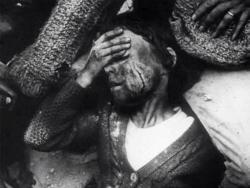
The War Game
1965 -
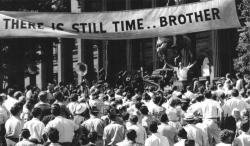
On The Beach
1959 -
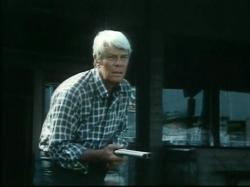
Where Have All the People Gone
1974 -

A Boy and His Dog
1975 -
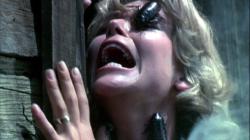
Bug
1975 -
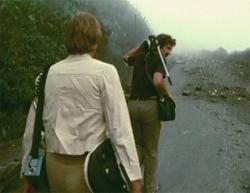
La Soufrière
1977 -

Escape from New York
1981 -

The Road Warrior
1981 -

Le Dernier Combat
1983 -
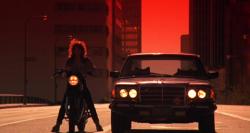
Night of the Comet
1984 -

Threads
1984 -
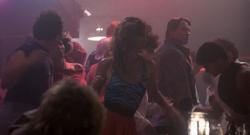
The Terminator
1984 -
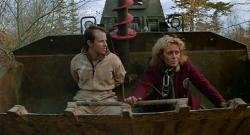
Def-Con 4
1984 -
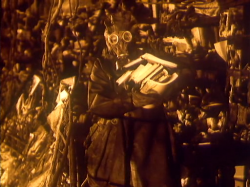
Letters From a Dead Man
1986 -
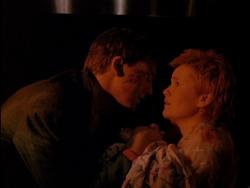
Miracle Mile
1988 -
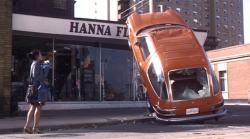
Last Night
1988 -
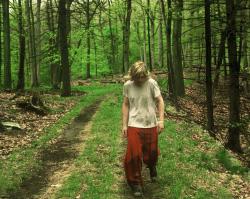
Last Days
2005 -

The Rapture
1991 -

Southland Tales
2006 -
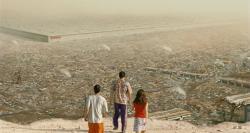
Idiocracy
2006 -

The Happening
2008 -
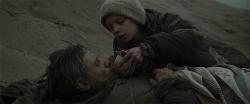
The Road
2009 -

Cosmopolis
2012
We don’t do comments anymore, but you may contact us here or find us on Twitter or Facebook.



